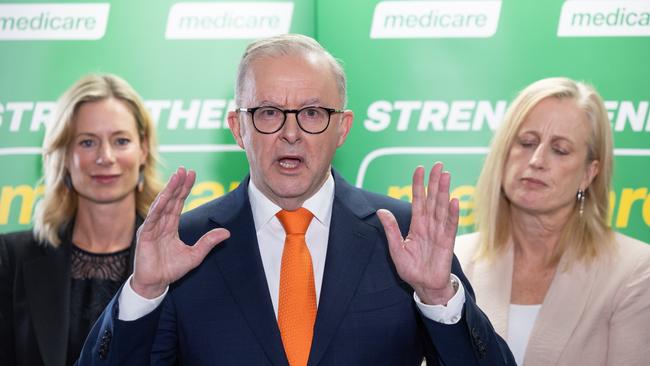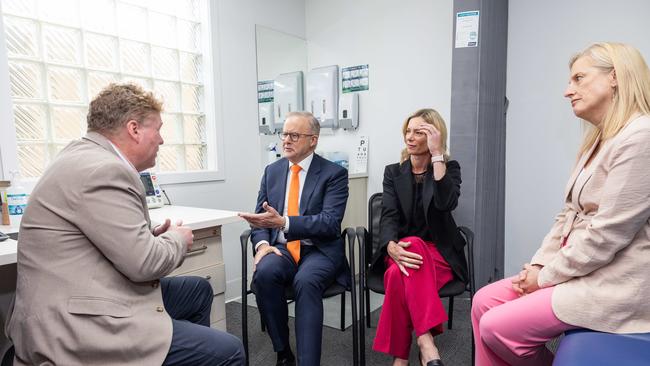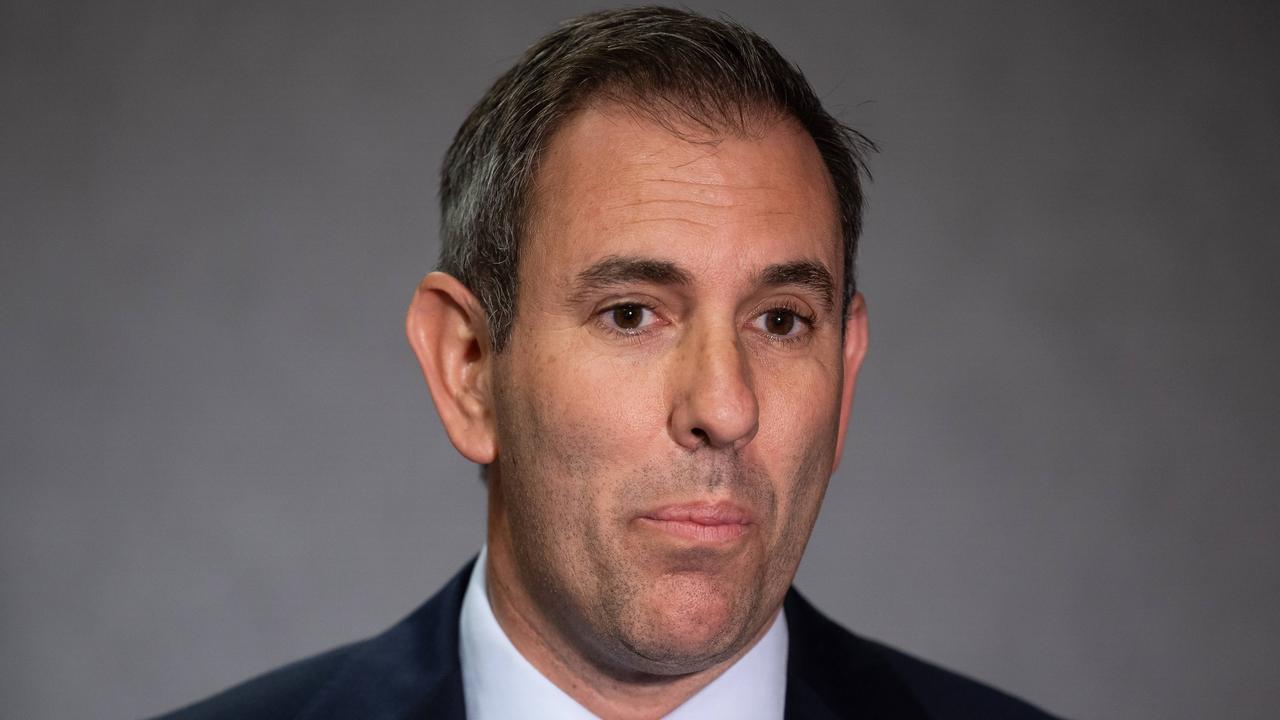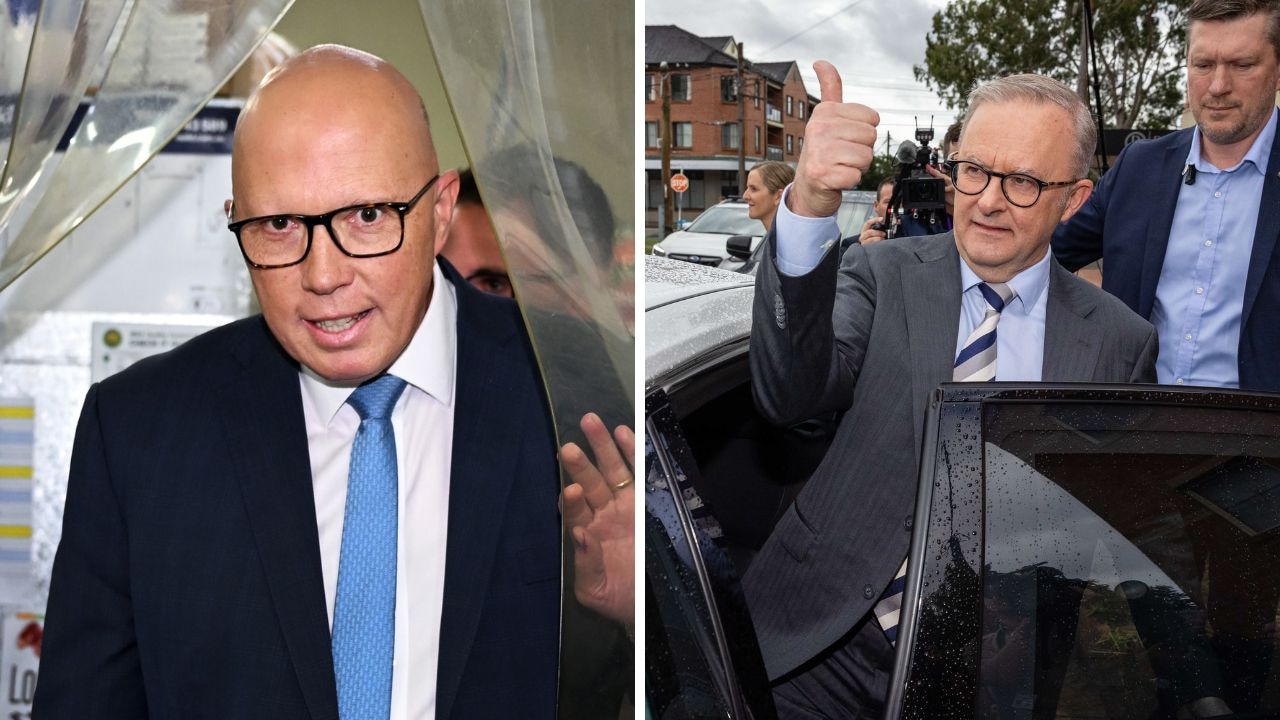Review into Medicare urgent care clinics show Labor has no proof they reduce hospital wait times
Anthony Albanese is pushing ahead with more urgent care clinics to win the election. But a review has found there’s no proof they cut hospital wait times. SEE THE VIDEO, VOTE IN OUR POLL

Federal Election
Don't miss out on the headlines from Federal Election. Followed categories will be added to My News.
Exclusive: Labor has no proof its $750 million Medicare urgent care clinics have reduced waiting times in hospital emergency departments, even as Anthony Albanese pledges to roll out more facilities.
An independent review into Labor’s signature health initiative found even though up to 334,000 hospital visits had been avoided in a year, it could not conclude emergency department wait times and visits had dropped as a result.
Despite this, the Prime Minister on Tuesday, during a visit to an urgent care clinic in Tasmania, declaring each clinic “takes pressure off emergency departments”.

The report, quietly published by the government the night before Mr Albanese called the election, also estimated the average cost to taxpayers per visit was $246 – five times more expensive than a regular GP appointment.
Patients do not pay any upfront costs at the bulk-billed clinics, but doctors groups have warned the funds invested by Labor to date would have been better spent boosting existing GP services.
The review also identified teething problems with the clinics, including a “challenge” finding enough staff and a lack of access to after-hours X-rays and ultrasounds, which were key selling points of the concept.
After spending $759.9m to create 87 clinics last term, the PM has already committed $644m to establish another 50 if Labor is re-elected, while the Coalition has promised not to roll back existing facilities.
The review examined the operation of the first 75 clinics opened between June 2023 and September last year, during which time there was 784,071 presentations.
It found about 46 per cent of patients said they would have gone to hospital if the urgent clinics did not exist, but lacked the data to conclude if this meant ED presentations had reduced for lower severity illness and injuries.
“At this early stage, the evaluation cannot draw conclusions about the impact of the program on … waiting times at partner hospital EDs, based on the publicly available hospital data,” the report said.

The average cost to the taxpayer for an ED presentation is about $616, but with 54 per cent of urgent care patients indicating they had not planned to go to a hospital, the majority of visits ultimately cost the taxpayer far more than a regular GP appointment, which has only a $42 subsidy.
At the 2022 election, Labor pledged the clinics would open 8am to 10pm seven days a week to treat urgent, but non-life threatening illness and injury to reduce pressure on hospitals.
Once in government, the rollout hit snags due to labour shortages that mean most clinics currently operate on average only 12 hours on weekdays, and even lower on weekends.
Royal Australian College of GPs president Dr Michael Wright said urgent care was a “more expensive model of care” than regular general practice, and argued it would have been “more efficient” for the government to have directed the funds to boost existing services.
Dr Wright said he was also concerned the clinics were adding further strain on the “stretched” workforce.
Coalition health spokeswoman Anne Ruston said the opposition was committed to delivering the clinics “as they were intended” with a focus on relieving pressure on hospitals.
But Mr Albanese said the 1.3 million visits made to clinics to date showed they were a “success,” as he insisted each patient paid “zero” dollars for treatment.
Originally published as Review into Medicare urgent care clinics show Labor has no proof they reduce hospital wait times
Read related topics:Anthony Albanese


